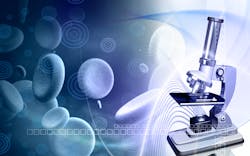UT Southwestern Medical Center researchers have discovered a method cells use to turn genes on and off that involves portions of proteins whose function has long been a mystery. The findings, reported in Cell, could lead to new ways of controlling gene regulation and may one day lead to new treatments for a broad array of diseases.
Researchers focused on MED1, a protein that forms part of a complex involved in transcription, a critical step in the process through which genes produce proteins. MED1, which has a large IDR, is known to compose part of some biomolecular condensates. It has also been linked to estrogen receptor-positive breast cancer.
To determine which other proteins join MED1 in condensates and which are excluded, the researchers opened human cells to expose their contents and reconstituted condensates in the presence of this extracted material by spiking in the IDR of MED1. They then isolated the MED1 condensates and used analytical techniques to determine the proteins present within the condensate and those left behind.
Their results showed that the proteins in these MED1 condensates were enriched for positive regulators of transcription, while negative regulators were left out.
Further investigation showed that proteins present in the MED1 condensates contained IDRs with shared sequence features of having alternating blocks of positive and negative charge. When the researchers removed IDRs from some included proteins, they could no longer join the condensates. Conversely, when the researchers added IDRs to the excluded proteins, they became part of the condensates.

